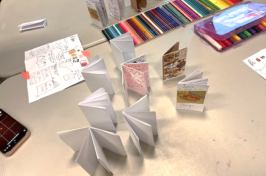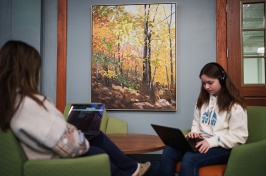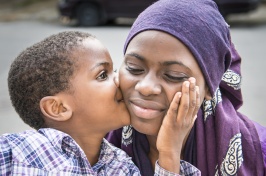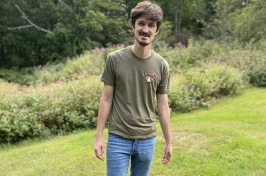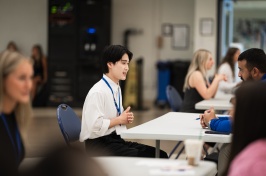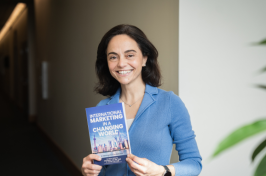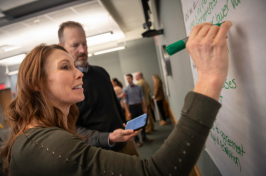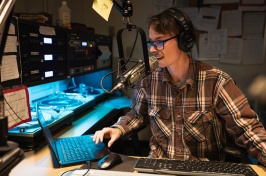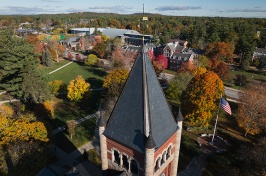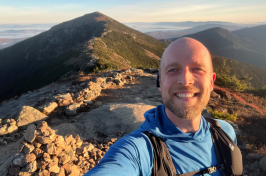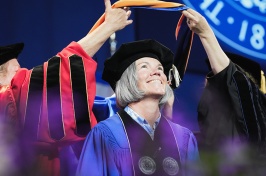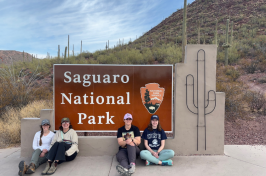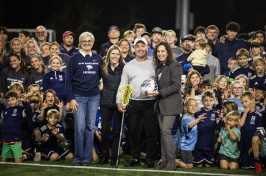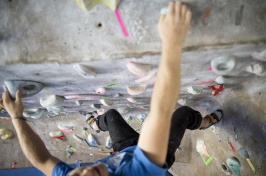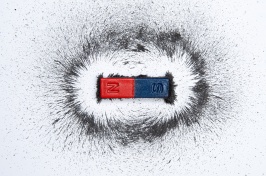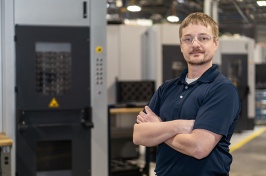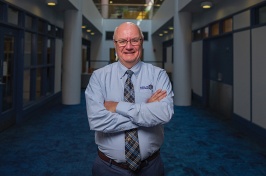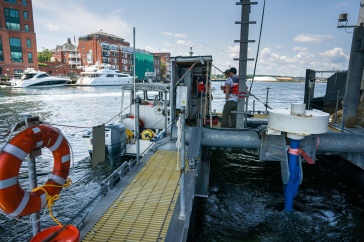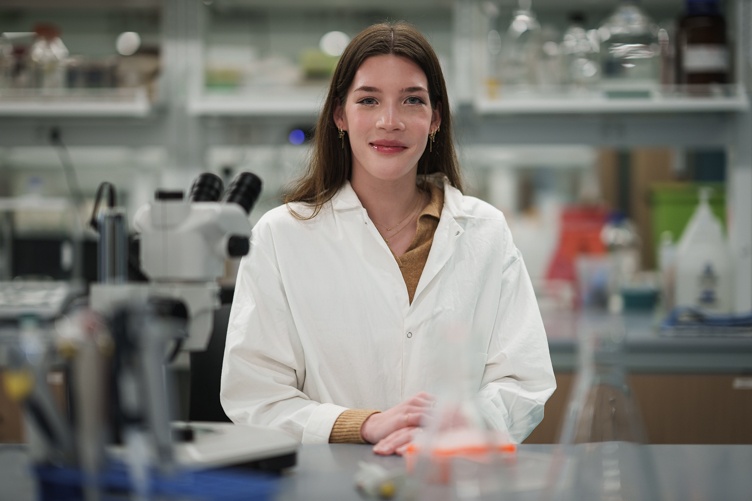
Camryn Berry can distinctly recall the first time a doctor talked to her rather than around her.
As a child battling fibrous dysplasia (FD), a rare genetic bone disorder that led to 21 surgical procedures by the time she was a teenager, there was no shortage of medical appointments for Berry to attend. And one constant through them all was the fact that she repeatedly felt more like a fly on the wall than a patient.
“I think there’s this phenomenon that happens when you’re a sick kid, which is that you’re kind of forgotten about in your own appointments, so everything sort of gets filtered through your parents,” Berry says. “I always talk about it like I went through it in the third person – like I was watching myself go through it in a way, because I was just a passenger in my own health care journey.”
Until she was 15 years old and met Dr. Andrea Burke at the National Institutes of Health, who became the first doctor to look her in the eye and ask if she wanted to learn about the science behind the new medication she was on.
It was at that moment that Berry discovered both her true calling and her first mentor. And now, years later, she’s bringing that same understanding and compassion to patients fighting fibrous dysplasia as a Ph.D. student at UNH working at Boston Children’s Hospital.

It’s a full circle moment for Berry, who never forgets to treat each patient as the lead character in their own medical story.
“It was in an instant – from that moment on, I was like, ‘This is what I have to do,’” Berry says of her interaction with Burke. “I understand that for a lot of these patients I’m working with, I’m the first person they’re meeting with fibrous dysplasia. And I understand the power and the responsibility that holds, to relate to them and offer them that comfort.”
Indeed, it is fairly uncommon to encounter fellow sufferers of fibrous dysplasia – it’s estimated that between 9,000 and 36,000 people in the U.S. suffer from the condition, Berry says.
So being both a patient and a scientist is a unique position to find herself in, and one she doesn’t take for granted as she builds toward a career studying the illness she’s afflicted with. The opportunity to further that quest came about thanks to encouragement from her academic advisor and a connection at Boston Children’s Hospital from having been a patient volunteer on a recent study.
At that point Berry had been a graduate student for almost a year and a half without performing any Ph.D. work, thanks to the unexpected departure of her initial advisor, so the clock was starting to tick. But it turned out she landed in the perfect situation.
“I reached out and asked if there would be any room for me,” Berry says, “and my research advisor wrote back almost immediately and said, ‘I’d love to make something work for you.’ So he has really helped me build what I feel like is a very custom Ph.D. where my priority has really been built around this focus of being a patient-scientist.”
Berry is performing clinical research on patients between the ages of 18 and 30, helping to run an interdisciplinary pain treatment program. The schedule is a significant time commitment for the patients – it includes treatment four days a week for three weeks, four hours per day, incorporating work with an occupational therapist, a physical therapist and a pain physician as well as psychological counseling every day.
“We’re not only studying pain in these patients but we’re also giving them tools to improve,” she says. “It’s a pretty intense schedule for them, but we’ve had really good patient outcomes.”
"This is important to me and my own independent journey, but I’m not going to be the one to reap the benefit of studies like this. It’s going to be the kid who comes after me, and that is why I do it, and why we all do what we do."
It was medical treatment that ended the cycle of surgeries and chronic pain for Berry at 13 years old. She’d had more than 20 surgeries on her face and jaw – including nasal passage reconstructions, an orbital bone reconstruction and numerous operations to address the roof of her mouth to enable safe eating, breathing and speech – when her family decided to try an experimental medication because “it was clear to us that what we were doing wasn't working,” she says.
She’s had great success on the medication, an injection she gives herself every three months that has managed pain and lesion growth. But there are certainly challenges, too, including some severe side effects that require close management. Berry must keep a constant watch on her calcium levels, which can be really low when on the medication and spike when off it, as hypercalcemia can be dangerous to the heart.
The result is a bit of a roller coaster, where Berry has gone from feeling no pain and doing well to being “unbelievably sick” and on IV fluids because of challenges keeping calcium levels in check. But despite those ups and downs, the medication has made the condition so much easier to live on a daily basis.
“Every day is a little different. But it's definitely a lot better than it was when I was a kid,” she says.
Berry’s experience as a child led to a bit of soul searching as she grappled with her individuality and identity and how wrapped up in the illness they could be.
Growing up in a town of about 2,000 people, surrounded by the same small group of peers throughout her most important developmental years, Berry says “I almost had no choice but for my fibrous dysplasia to be my identity” because that’s what her classmates and friends always associated her with.
As she transitioned to college, she tried to distance herself from that, taking advantage of new surroundings and new acquaintances – only to ultimately realize that she didn’t want to run from her association with the disorder but rather to embrace it more fully.
“When I went to college, I think I really rejected that identity. I really took that time to explore who I was outside of this rare disease,” she says. “But in the end, I thought, ‘No, I’m actually so proud of this identity.’ I really accepted that this is a core part of who I am and a core part of my motivation and a driving force in my life.”
Berry has followed that driving force through her undergraduate experience and into her Ph.D. pursuit. Her personal identity search and her experience with Burke that first put her in the driver’s seat of her own care continue to shape the work she does and the compassionate way she interacts with her patients.
She’s ultimately working to ensure that the next generation of people with FD have a different – and better – experience than she did.
“One of my patients recently said, ‘You can’t prescribe friendship, but it’s still the best medication,’” Berry says. “I hope my patients feel that – I hope they feel the support from the scientific community and the research community. Because they’re the reason that I’m here. This is important to me and my own independent journey, but I’m not going to be the one to reap the benefit of studies like this. It’s going to be the kid who comes after me, and that is why I do it, and why we all do what we do.”
-
Written By:
Keith Testa | UNH Marketing | keith.testa@unh.edu

